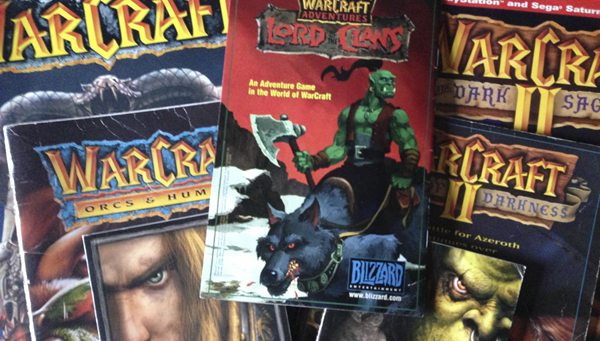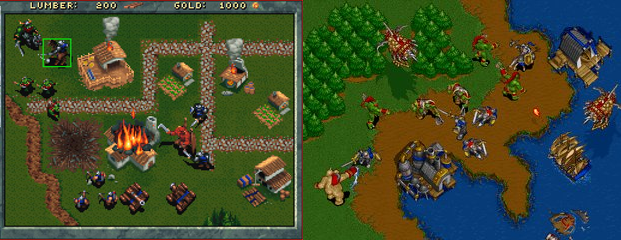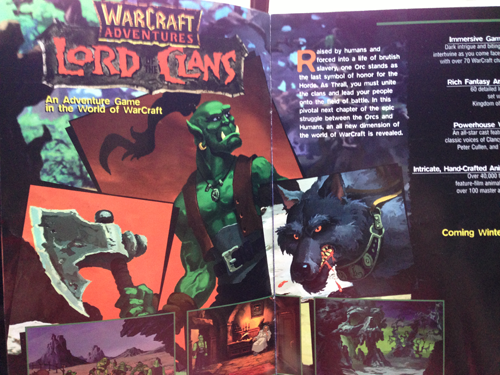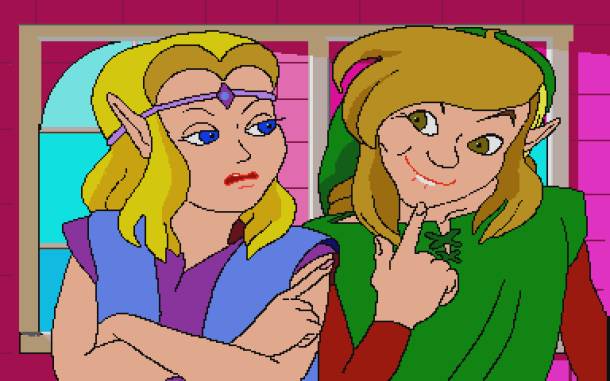
Today’s Lost Classics post is all about the Warcraft series. As such, it may require a bit of foreknowledge – particularly if you’re too young to remember a time before the name Warcraft referred to anything besides Verne Troyer’s favorite MMORPG.
Blizzard’s original mid-90’s Warcraft games were massively successful strategy epics, set in a darkly humorous fantasy world. They tended to involve a lot of scenarios in which green-skinned warriors with Yoda voices (known as The Orcs) engaged in bloody warfare with a bunch of armor-clad psuedo-Englishmen (known as The Humans). These were landmarks in the RTS genre, and the direct ancestors of games like Starcraft, DOTA, and League of Legends. (And yes, they would eventually inspire the most profitable game ever released. More on that later.)

My cousin introduced me to the early Warcraft games when I was about 7, at a time when my half-formed nervous system lacked the capacity for any strategy, realtime or no. Despite this, I loved the series; not because I could make it through a single map without resorting to cheat codes, but because I found the setting completely engrossing. Each race and faction had its own texture and history, detailed in hefty instruction manuals penned by legendary designers like Bill Roper and Chris Metzen. In retrospect, some of their ideas may have been somewhat derivative, but the attention to detail and the sheer volume of story that came with these games is still something that seems pretty special. My cousin and I spent a lot of time poring over these stories, dreaming of what it would be like to assume Orcish identities and travel through the World Of lands of Warcraft.
Point being: you can forgive me for getting really, really excited for this…

Warcraft Adventures: Lord of the Clans was to be a Lucasarts-style adventure game, leading players for the first time deeper into the World Of setting of Warcraft. Players would control a sympathetic Orcish youth named Thrall, raised in human captivity, as he traveled through the realm of Azeroth to reunite the broken Orcish Horde. The tiny overhead sprites of Warcraft‘s units would be realized at last as full-fledged characters, brought to life by legendary VAs like Peter Cullen and Clancy Brown. Their stories would be detailed by lush, “television quality” animation, including lengthy FMV cut scenes.
This was not a low-profile project. LotC was the cover story of an issue of PC Gamer (the only one I ever bothered to purchase), and it was advertised on all those little inserts Blizzard used to plant in their game’s boxes. They even cobbled together a trailer out of the FMV scenes they’d completed! Let’s take a look:
…aaand the enthusiasm wears thin. Bit of an aesthetic divergence from the art of the RTS games, isn’t it? This is because the art for LotC was outsourced to a Russian animation house known as Animation Magic. They certainly produced a lot of animation for the game, I’ll give them that, but it all looks kind of lumpy and awkward. Even as a kid, I had to convince myself that the stills I saw in magazines were still unfinished, that it would look so much better when I saw them in motion. This prediction has not borne out.
It’s understandable that Blizzard would want to hand the art chores off to a dedicated studio with plenty of animation experience – but why Animation Magic? Maybe there was something in their portfolio that was really –

OH COME ON.
Yes, Blizzard handed the reigns of their flagship property off to the guys who brought us the CDi Zelda games. How were these people still getting high-profile work? Or any work? Was the game industry so hard up for cash in the 90’s that they literally couldn’t afford to look at any animation studios outside of former Soviet blocs?!
In any case, after a year in development, LotC was practically a finished game – and then it was cancelled ignominiously in 1998, right before E3. According to Blizzard’s press desk: “The decision centered around the level of value that we want to give our customers. It was a case of stepping up and really proving to ourselves and gamers that we will not sell out on the quality of our games.” TRANSLATION: we decided the world had enough grotesquely animated stock footage to use in deranged video mashups.
Actually, according to Bill Roper, Blizzard was totally happy with the quality of work Animation Magic was doing. They simply took a step back and realized that they were making a game that didn’t push any boundaries, that was basically just a nostalgic ode to old Lucasarts and Sierra adventure games, created at a time when the public was moving away from the adventure genre. (It didn’t help that Lucasarts itself was actually doing more innovative and interesting stuff with it than Blizzard was.)
Were they right? Was the game too derivative, and not worth releasing? Well, for the past decade or so, there’s been no way of knowing. And then, as will sometimes happen, someone went and leaked footage of the game onto Youtube:
You can peruse the videos and reach your own conclusions. For what it’s worth, I can definitely see where Blizzard was coming from. The puzzles, which were scheduled for a serious overhaul just before the game was scrapped, seem like pretty standard exercises in adventure game inventory-shuffling. Thrall dispenses much the same sarcastic, self-aware quips that any other adventure game protagonist would, lines that might work if you’re Guybrush Threepwood, but not so much if you’re a vengeance-fueled green-skinned monster. The most egregious flaw, I think, is a complete lack of urgency. As far as I can tell, neither Thrall nor any other character in the game runs any risk of being killed at any time. Given the slapstick, heavy metal brutality that permeated the early Warcraft games, it’s a prett poor fit.
On the other hand, LotC makes me more than a little wistful for what Warcraft used to be. The final entry in the RTS series, Warcraft III, was developed in tandem with World of Warcraft – and it’s always seemed to me that Blizzard used the former as a means sever ties to the old games so they could make way for a better MMO setting. They elevated the RPG mechanics of “hero” units above the traditional RTS gameplay, dumped literally dozens of new humanoid races into the universe, and retconned huge portions of the series history. All of this was probably necessary to establish a precedent for what they wanted to do in World of Warcraft, and clearly history has proven them ridiculously, ridiculously wealthy. But it came at the cost of anything recognizable as the world of Warcraft people like me grew up with. (Maybe there’s still a token Orc here and there floating about between the werewolves and the Panda-men? I’m not really sure.)
That’s all totally fine. The old games aren’t going anywhere. But it’s fascinating to look at a cancelled title in such a big series, and think about it in terms of an alternate evolutionary path. What if the game did come out? What if, despite its deformed art style and lack of compelling gameplay, it turned out to be somewhat successful? Would the original Warcraft setting have stuck around longer? Would World of Warcraft have been created, or would we all be playing Warcraft 6 right now? Would Verne Troyer, robbed of purpose, simply cease to exist?!
The world of Warcraft may never know.
-CC
Leave a Reply